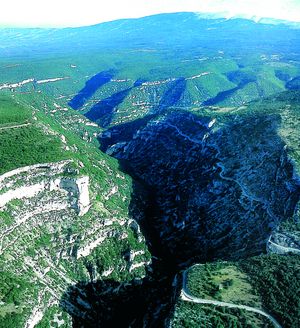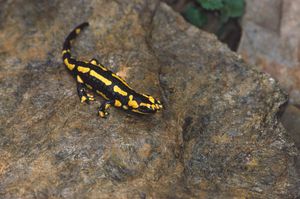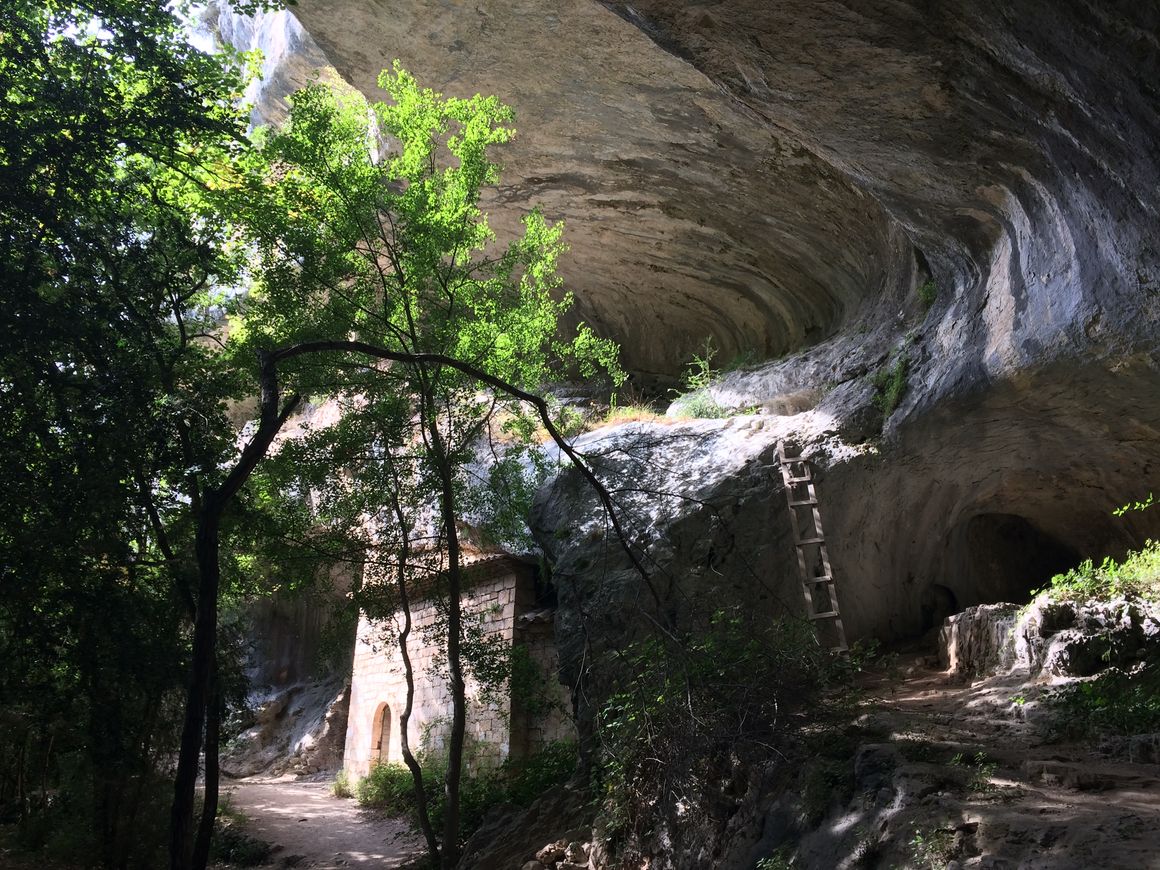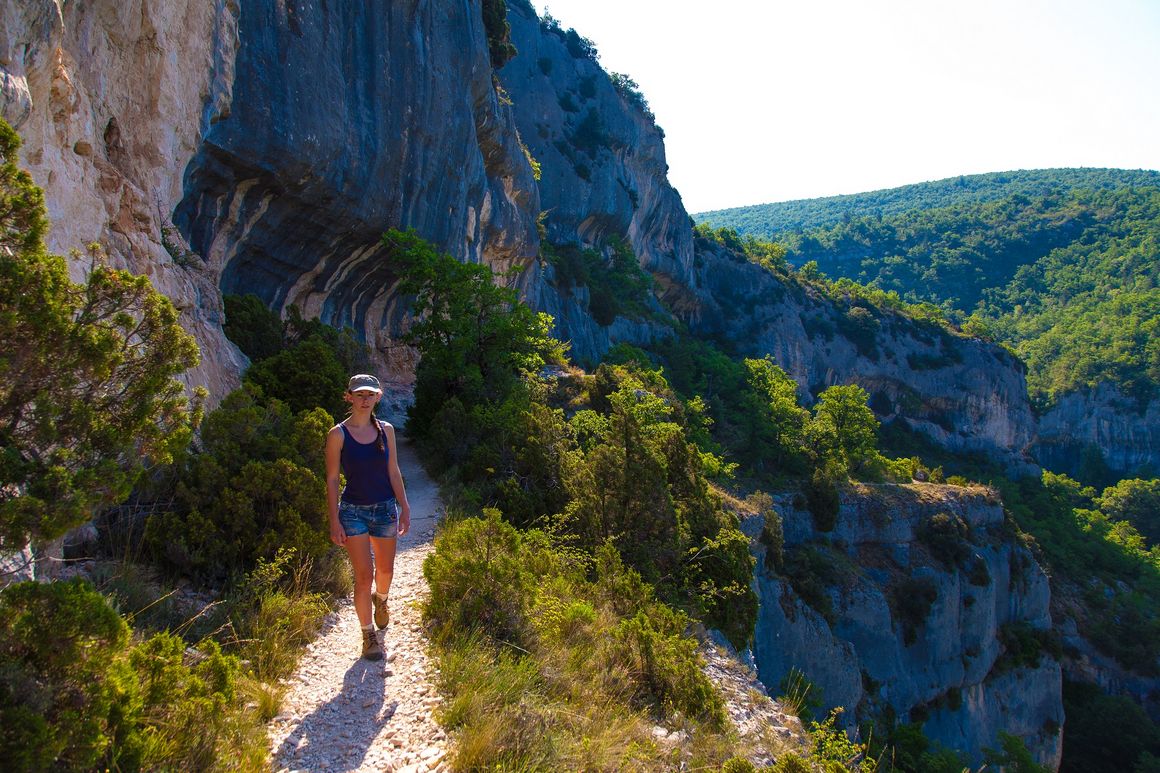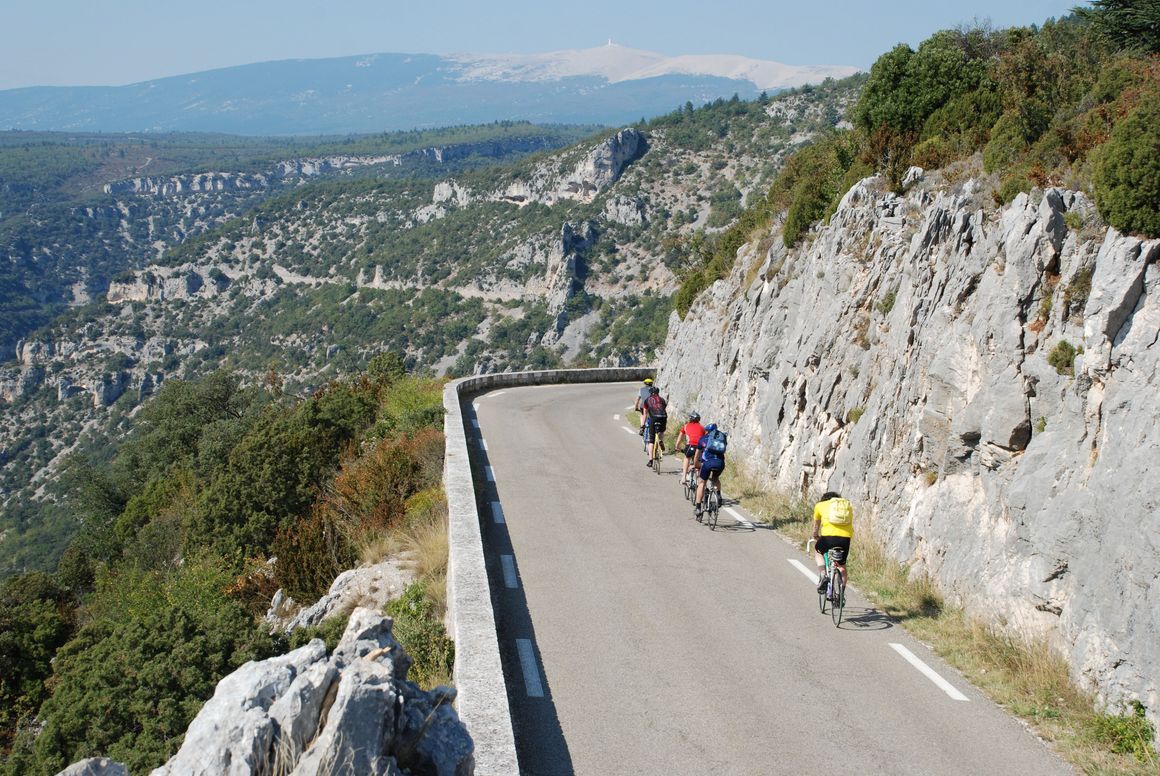A wild canyon, a hiker's paradise and an ideal spot to observe rare wildlife, flower and bird species specific to the area. The royal eagle is just one example out of many. To protect the exceptional richness of the ecosystem found here, the Gorges of the Nesque were classified in 1998 by UNESCO into the "Reserve de Biosphere du Mont Ventoux".
The canyon “Gorges de la Nesque”, outside of time...
After the canyon “Gorges du Verdon”, the canyon “Gorges de la Nesque” is the most spectacular one in Provence. This imposing and wild ravine reaches a depth of more than 400 metres in some places. It was formed by several geological movements and carved out by the Nesque river; it starts at the little lake near Monieux and ends up in Methamis.
As it is characteristic for karstic landscapes, the Nesque seeps into the limestone to such an extent that the riverbed is regularly dry from April to October.
You discover the canyon of the Nesque along the touristic road between Villes sur Auzon and Monieux. This corbelled route is marked by tunnels and startling viewpoints. The most striking one is the viewpoint of Castelleras opposite of the “Rocher du Cire” (rock of wax) which got its name from the wild bees that once inhabited it.
From this panoramic viewpoint, situated above an abyss of 300 metres, the canyon shows its depth and wild character in full splendour.
Natura 2000 site
Because of its outstanding beauty this natural and historic site was given the label “Biosphere Reserve” by the UNESCO and belongs to the European network NATURA 2000.
Various initiatives have been taken to preserve the peacefulness and biodiversity, the characteristic features of this magic scenery.
During your walks you might be lucky enough to see a golden eagle, a peregrine falcon or a salamander !
The troglodytic chapel Saint Michel de Anesca
The bottom of the canyon is full of unexpected surprises, above all the cave chapel “Saint Michel” dating from the 12th century.
This religious building of Romanesque origin, situated under the shelter of an imposing rock, was modified and restored several times in the course of the centuries, the last time in 1643 as can be seen on the inscription of the stone above the entrance. Before the first world war, an annual pilgrimage to this chapel honoured the name day of its patron saint.

